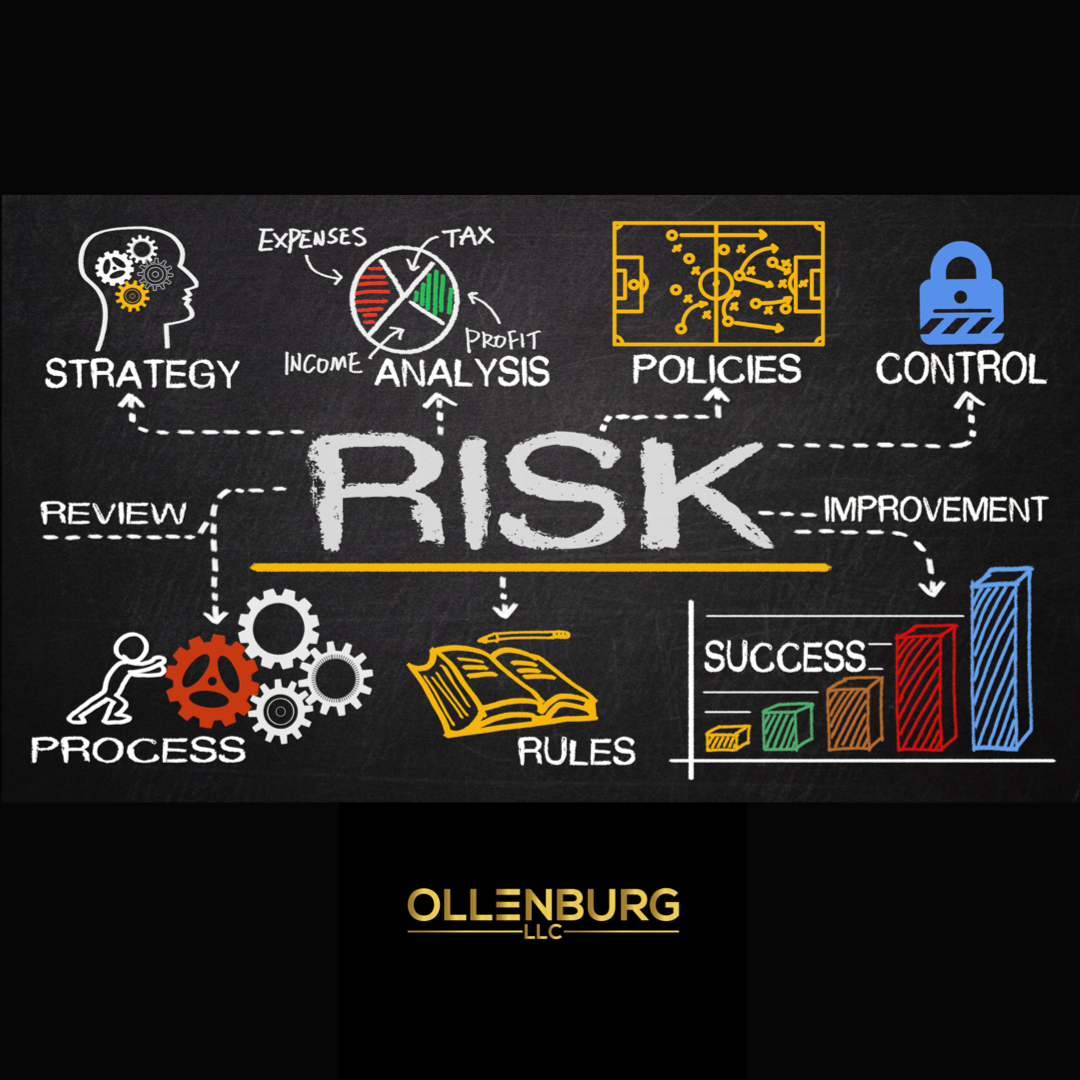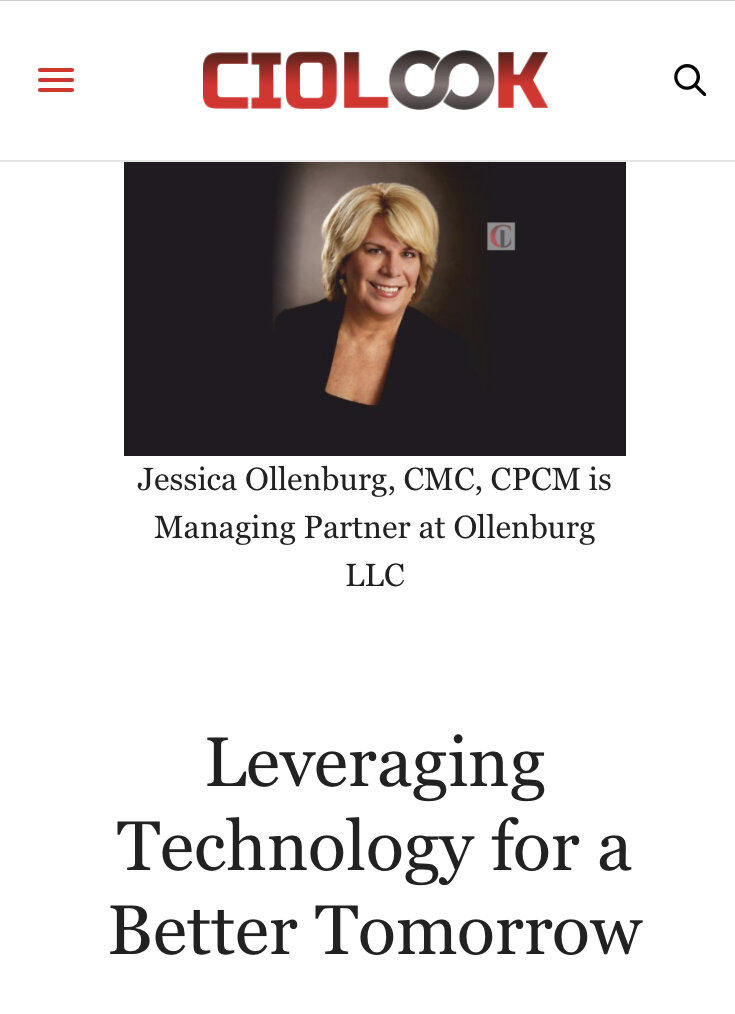Jessica Ollenburg, CMC, CPCM
In the dynamic landscape of business, the role of the C-Suite goes beyond steering the ship; it involves skillfully navigating through risks that can impact the organization’s success. Effective risk management at the executive level is paramount for ensuring sustainable growth and resilience. In this article, we explore strategies and tools that empower the C-Suite in managing risks proactively, while never losing organizational ability to capture positive opportunity.
Understanding the Landscape
In today’s dynamic business landscape, the role of risk management has never been more crucial, especially within the C-Suite. As the driving force behind organizational strategy, executives must adopt robust strategies and tools to effectively manage risks and safeguard their enterprises. Empowered executives will grasp a comprehensive understanding of organizational risks. This involves conducting thorough risk assessments, considering both internal and external factors. By identifying potential threats and opportunities, executives can develop a strategic approach to risk that aligns with the company’s objectives.
Establishing a Risk-Aware and Opportunity-Aware Culture
Executives should promote open communication regarding risks and opportunities at all levels of the organization. As individual humans, most cannot see all facets of organizational risk and opportunity; however, bringing these viewpoints together can close the gaps. Appreciative Inquiry offers us extraordinary opportunity to amplify what is working well rather than to focus on what’s wrong. While we cannot afford to negate problems, we must recognize that humans are naturally inclined to over-attend what’s wrong, thereby mitigating our opportunity to excel. Compartmentalization must be deployed to isolate the negative from the positive, so that we can more easily bring real opportunity to the forefront with lesser strain on people and resources. While quick bursts of adrenaline can empower us for limited time, the relaxed mind is statistically far more powerful to create, invent and problem-solve than the overly stressed mind. Proactive risk mitigation remains popularly considered to be three-times less costly than reactive risk mitigation.
Building and Relying Upon the Right Information
Geopolitical uncertainty and the questionability of external data contribute to landscape “fog.” Deploy internally derived data to the greatest ability and value possible, keeping in mind the cost-benefit analysis of data collection and interpretation. Extrapolation can be deployed where best. Rather than entrusting or ignoring external data, check intuitively opposing sources for external data, and interpret this in consideration of internally-derived data and company-specific trends. This enables timely identification and mitigation of potential issues, creating a more growth-ready and resilient business environment. Leveraging advanced data analytics helps in discerning patterns and trends, providing executives with the necessary foresight to identify emerging risks and opportunities.
Embracing Technology
Technology plays a pivotal role in modern risk management. While the threats of overdependence, misinformation and privacy breach are real, artificial intelligence is thriving as a business resource; leveraged in part to create communications, customer service and cyber security, among other popular uses. As with all tools, the caveats must be understood and addressed at the highest level to ensure alignment and to capture enhanced opportunity. AI can thrive as a resource where proper human judgment and proper risk mitigation are deployed. Executives should leverage advanced analytics, artificial intelligence, and data-driven tools to assess and predict risks. Technology platforms should be designed in part by those who truly know the efficiency of tasks. Those who allow their tech teams to run amuck with platform change without true value are threatening their own companies. Platforms must be built with future informational needs in mind, as the creation and coding of fields is critical to the future use of today’s information for tomorrow. The best use of technology provides real-time insights, enabling proactive decision-making, being nimble and reducing response time in the face of emerging threats and opportunities. In communication, technology-enabled practices will consider that younger team members have statistically spent more time communicating through devices rather than the old-school means of negotiating, persuading, managing conflict and leading.
Legal Risk Management and Compliance
Staying on top of regulatory compliance is crucial. Executives must ensure that their organizations not only comply with existing regulations but also anticipate and prepare for regulatory changes. This proactive stance mitigates legal and financial risks associated with non-compliance. Constantly changing laws at local, state and federal levels create a significant burden in research, know-how, due diligence and affirmative defense. The nexus of remote and hybrid workers must be carefully considered with knowledge regarding the true nexus of work, supervision and unique governing laws. As an example of this burden of know-how, my own Inbox folder of government notices regarding lawsuits, fines and changing laws/precedents has increased by 1104 new announcements in only one month’s time, December 2023. Much of the strongest demand for Ollenburg Executive Consulting is immediately in not only the change management know-how through extensive experience and never-ending research of what works and what doesn’t, but also the risk mitigation available through affirmative defense signed off by court-recognized third-party experts. Additionally, our LawfulChecks.com initiative reports significant increases in pre-hire background investigation. While many employers are required to perform such checks where hiring fiduciary, secure access, childcare, healthcare, privacy and/or the many other categories of extraordinarily trusted employees with restricted access; we’re seeing an increase in employers seeking to protect their existing team through more precise evaluation of incoming team without discrimination and without creating risky internal records. Where talent shortage exists, an attractive employer culture includes mitigating risk and maximizing quality of work life for team members.
In Conclusion
Effective risk management involves scenario planning; and by developing and testing various scenarios, executives can identify vulnerabilities and formulate contingency plans. This proactive approach helps organizations adapt swiftly to unforeseen challenges, creating a nimble organization. While being properly risk-reduced is key, we recommend a keen awareness to view opportunity and upside as equally critical to organizational health. A properly aligned organization will often achieve the greatest reputation and workforce strength. Today’s leaders may have a blurry vision of employee motivators due to changing times, yet establishing and honing a well-defined and well-aligned organization can attract and engage the right people to the right seats with the right resources and clarity. Collaboration is key. Executives must work closely with different departments to ensure a holistic approach for optimized opportunity and mitigated risk. By implementing robust strategies and leveraging cutting-edge tools, the C-Suite can lead their organizations to not only survive but thrive in the face of challenges.





